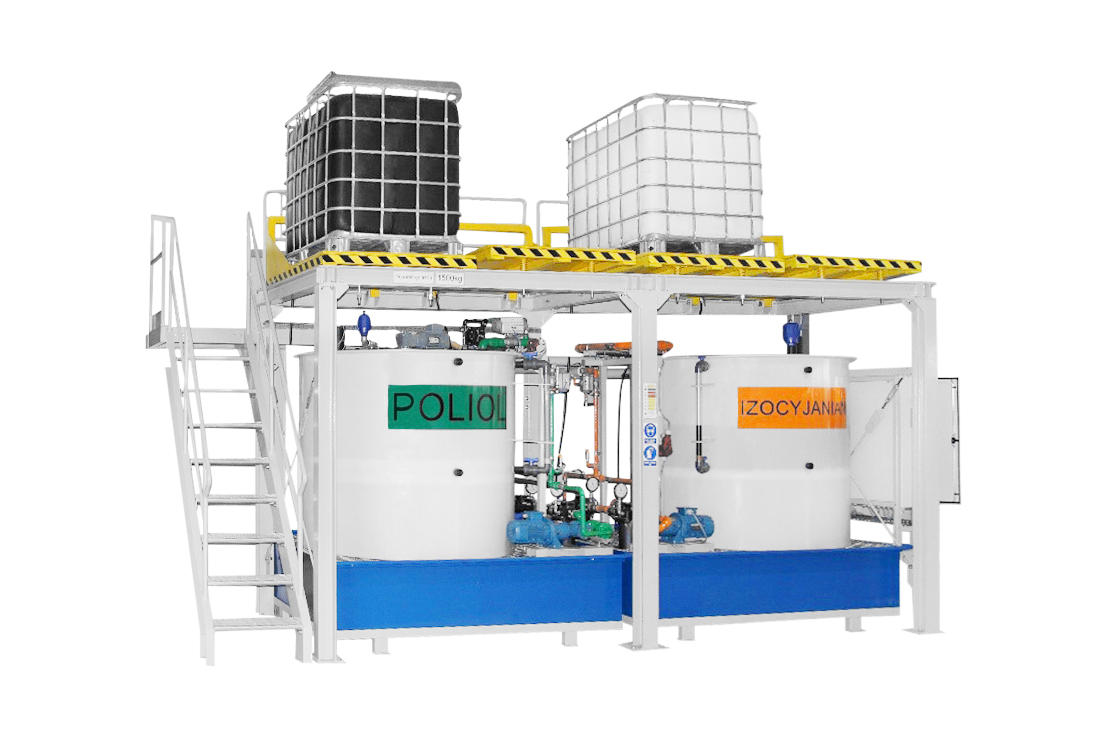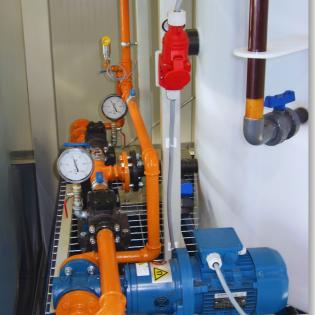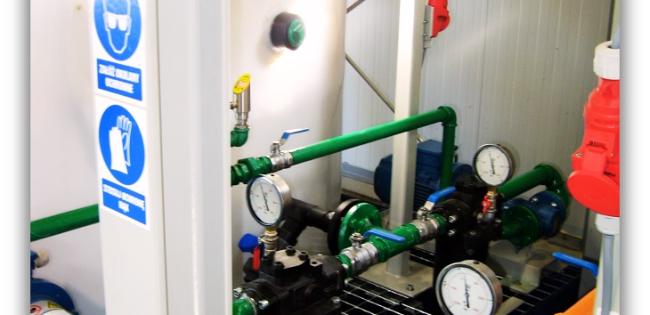Liquid unloading and warehousing station
The unit has been designed for central supply of production machinery with liquids delivered in Intermediate Bulk Containers (IBC).
Basic applications
- unloading liquids delivered in IBC units;
- storage under controlled conditions;
- transfer of liquids to production machinery.
Description of operation
- place the Intermediate Bulk Containers on the provided platform rack;
- connect the outlet to start the gravity flow of the container contents;
- the process is controlled and stopped when the intermediate tank is filled to the maximum level;
- mixer is switched on to ensure correct consistency and homogeneity of the liquid;
- the last stage is liquid pumping to the Customer’s system or machine, depending on the needs.

System components
OPERATOR PLATFORM
Allowing easy connection of the drain system to IBC using Camlock quick-couplings.
IBC DOCKING
Provided with special, spring-tilted ramps to allow complete draining of IBC.
INTERMEDIATE TANKS
Standard capacity 1500l, made in plastic or steel.
LEVEL SENSORS
Ultrasonic or immersion type to measure the liquid level inside the tank.
DRIP TRAYS
120% of capacity of the intermediate tanks.
PUMPS
Depending on the pumped substance, the system is equipped with screw pumps, gear pumps, membrane pumps, provided with mechanical sealing or hermetically sealed with magnetic coupling.
FILTERS
Strainers for pumped fluids and air breathers (with water removal) for equalizing intermediate tank pressure.
VALVES
Operated manually or by a pneumatic cylinder, selected individually based on the applied pressure and pumped medium.
MANOMETERS
Vacuum gauges or pressure switches indicating current negative or positive pressure levels in the system.
MIXER
Particularly for nonhomogeneous liquids, with stepless speed adjustment.
PLC CONTROL
Machine control and communication with other equipment via Siemens S7-1200 controller. Other control system on demand.
BENEFITS
- reduced storage area thanks to centralized storage of chemicals used in production;
- relieving the production area, as IBC units are no longer kept by the machines;
- reduced handling costs;
- elimination of hazards related to chemical leaks (posing environmental hazards as well);
- eliminated personnel hazards related to contact with substances when handling IBC units;
- eliminated machinery downtime for raw materials make-up.

